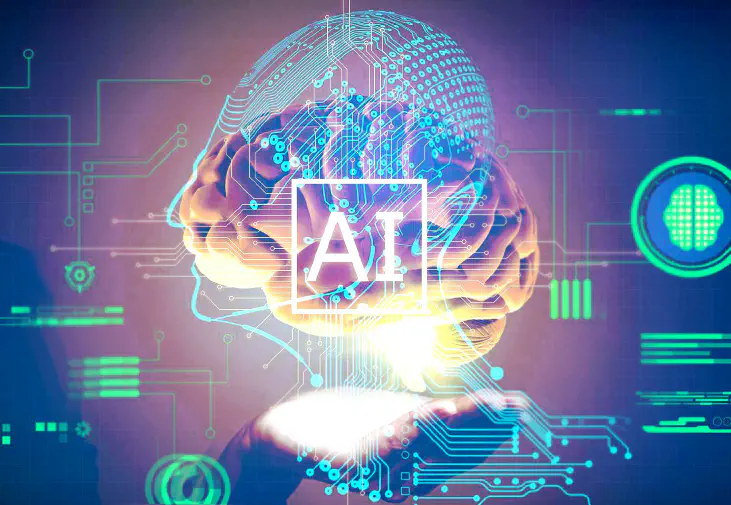While stability and order are hallmarks of prosperous societies, not all stable regimes truly respect human liberty and dignity. Certain governments maintain functional, productive societies on the surface, yet covertly repress political dissent and restrict autonomy through oppressive policies. Such regimes, I argue, represent a disturbing phenomenon - that of the “functional dystopia.”
To explore this concept, we must first define what differentiates a superficially stable society from one that provides genuine freedom and consent. A functional dystopia maintains order not through voluntary cooperation and shared values, but through more insidious means like strict surveillance, propaganda, and fear of reprisal for dissenting thought. Individuals lack meaningful political participation and experience a “stability” rooted in oppression rather than common purpose.
In shining light on real and imagined functional dystopias, we see how stability can emerge from forfeiture of consent just as easily as from its presence. Two classic examples are George Orwell’s Nineteen Eighty-Four and Aldous Huxley’s Brave New World - societies where permanent war, rigid social control and chemical pacification enforce stability while obliterating dissent. However, less overt examples also exist historically and today.
Defining Functional Dystopias
The core attribute separating functional dystopias from legitimate stable governments is the presence or lack of meaningful consent. Stability achieved only through erosion of civil liberties and political freedoms cannot truly be considered just or sustainable.
To better conceptualize functional dystopias, we must first acknowledge that all governments exercise some degree of authority and impose certain obligations on members of society. Reasonable restrictions and governance do not in themselves constitute oppression. However, regimes become dysfunctional when individual autonomy, privacy, and diversity of political expression are excessively curtailed.
Specifically, functional dystopias tend to exhibit some or all of the following characteristics:
- Strict information control through censorship, propaganda, and punishment of dissenting ideas. When citizens live in fear of reprisal for free thinking, true political consent is impossible.
- Invasive monitoring of civilians through mass surveillance systems. Excessive data collection aimed at finding and suppressing opposition violates reasonable expectations of privacy.
- Repression of organized political activity outside the ruling establishment. Denying citizens ability to form opposing parties or interest groups leaves them no nonviolent outlets to enact change.
- Gross imbalances of power where leaders face no real checks on their authority. Lack of meaningful democratic processes, term limits or accountability leads many regimes down abusive paths.
Classical Depictions in Fiction
Let’s proceed by exploring some examples of functional dystopias, both real and imagined, to help illustrate the concept further.
When seeking to analyze functional dystopias, two works often referenced for their powerful visions are Nineteen Eighty-Four by George Orwell and Brave New World by Aldous Huxley. Though depicting societies of different stripes, both exemplify many traits of oppressive yet superficially “stable” rule.

— public domain
Meanwhile Huxley’s World State shows how stability can arise not through terror but chemical “happiness” and infantilizing distraction. Sexual freedom and feel-good soma sap citizens’ will to dissent, leaving them docile appendages of the World Controllers. Though physically comfortable, residents experience stunted emotions and lack meaningful individual agency or expression. Both novels present chilling visions of ostensibly well-oiled dystopias that prioritize order over human freedom and moral choice.

— public domain
Historical Case Studies
Let’s explore some real-world historical case studies to illustrate functional dystopias.
Nazi Germany presents a grim example of a functional dystopia. Under Hitler, Germany saw rapid economic improvement and renewed international prestige following the chaos of Weimar-era politics. However, stability was purchased through savage oppression of political dissidents, Jews, and other minorities. The Gestapo secret police ruthlessly crushed any challenges to the Führer’s totalitarian rule through surveillance, imprisonment and violence. Meanwhile, sophisticated Nazi propaganda consolidated fascist ideology’s dominance over schools, media and public spaces. By effectively extinguishing independent civic organizations and enforcing rigid conformity, Germany’s stability came at the enormous cost of individual liberty, diversity and basic human rights.

— fee.org

— rbth.com
Much of the excessive restriction and oppression exhibited by functional dystopias stem from the psychological impulse to consolidate power at all costs. Authoritarian leaders often emerge in unstable eras, promising restoration through rigid control. This can award short-term stability but ultimately depends on perpetual suppression of dissent that questions the regime.
In Nazi Germany, Hitler seized upon post-WWI grievances and economic woes to propel fascism - a radical ideology predicating national rejuvenation through racial purity and unchallenged authoritarian rule. Anti-Semitism supplied a convenient scapegoat, and the Gestapo helped spread pervasive paranoia needed to smash “enemies within.” These toxic factors spurred the repression and brutality that quashed political plurality.
Similarly, Stalin rose amid Bolshevik revolution’s turmoil by promising iron discipline and state-orchestrated modernization. But his paranoid “socialism in one country” doctrine required total devotion to an infallible party line enforced by the NKVD. Citizens lived as obedient cogs in Stalin’s designs, fearful of speaking truth to totalitarian power.
In each case, the quest for absolute control beyond what’s needed for competent leadership corrupted governance into oppressive excess and human rights violations. When stability depends on perpetual deference to an unerring leadership, systems lose capacity to peacefully reform or update ideals as times change. Thank you for prompting me to examine the dangerous ideological roots enabling functional dystopias’ most abusive attributes - it enriches understanding of these pivotal issues.
Alternative Models
Two contrasting yet relevant theoretical models are liberal democracy and civic republicanism. At its best, liberal democracy aims to curb abuses through checks on power, protection of civil liberties, free and fair elections,etc. It prizes individual rights and political competition. However, liberal democracies are not immune to dysfunction if civic participation erodes or partisan divides disrupt governance.
Meanwhile, the civic republican model prioritizes virtue, public service and deliberative consensus over pluralism or protection of unstable majority rule. However, its emphasis on communal spirit and civic duty over dissent risks sliding toward majoritarian oppression absent robust guardrails for dissent.

— artwork
Countries like Denmark, Norway, Canada and New Zealand have achieved levels of stability, prosperity, and happiness through muted political divisions; senses of shared national purpose; reformed institutions; and balance between liberty and community. Their mixed frameworks avoid both tyranny of elites and instability of strict majority rule through Checks and balances, pluralism, and nonviolent, incremental reform.

— nbcnews
Potential Futures: Governance and Advanced AI
Looking towards the future, one development worth considering in relation to functional dystopias is the prospect of highly advanced artificial intelligence surpassing human abilities. As AI systems progress towards super-intelligent capabilities, theorists have speculated on various potential outcomes - some dystopian, others more optimistic.
If future AI is empowered as a ruling elite accountable only to itself, key traits of functional dystopias could arise - stringent social control to preempt “problems”; mass data collection invading privacy; severe intolerance of values conflicting with directives. While stability may persist, individual autonomy and civic engagement could fade. Yet governance respecting human rights and capabilities even amid technological change offers hope. Overall, considering dystopian AI futures reminds us that technologies should be stewarded carefully to avoid diminishing human dignity, consent or pluralism in the name of any goal.

— public domain
- “The Anatomy of Totalitarianism” by Hannah Arendt - A seminal work examining the features and dangers of coercive regimes, still highly relevant today.
- “Brave New World Revisited” by Aldous Huxley - Huxley reflects on his dystopian masterpiece’s parallels with modern consumerism and social control methods.
- “The Captive Mind” by Czesław Miłosz - A profound first-hand account from a Polish poet illuminating intellectual life under Soviet domination.
- “Nineteen Eighty-Four in 1984” by Timothy Garton Ash - A retrospective examining the prescience and lingering influence of Orwell’s insights into propaganda, surveillance and political language.
- “On Tyranny” by Timothy Snyder - A compact yet compelling history of tyranny’s warnings for democracies, with Syria and Ukraine as case studies.
- Reports by Freedom House and Amnesty International chronicling civil liberties worldwide - Help assess whether specific contemporary nations exhibit functional dystopian tactics.
- “Artificial Intelligence and Life in 2030” by Stanford University’s One Hundred Year Study on AI - A comprehensive report outlining potential advances and challenges regarding human-level and superintelligent AI.
- “Superintelligence” by Oxford philosopher Nick Bostrom - A seminal text examining existential risks from advanced posthuman cognition if not developed and applied carefully.
- Papers from the Future of Humanity Institute at Oxford examining how to build beneficial AI through approaches like constitutional methods.
- Reports from the AI Now Institute at NYU scrutinizing biases and societal effects of modern AI/algorithms.
- “Life 3.0” by Max Tegmark - A physicist’s perspective on how developing benevolent superintelligent AI could help resolve major global issues.
- Publications from the Center for a New American Security discussing policy and oversight needs regarding military AI systems.



